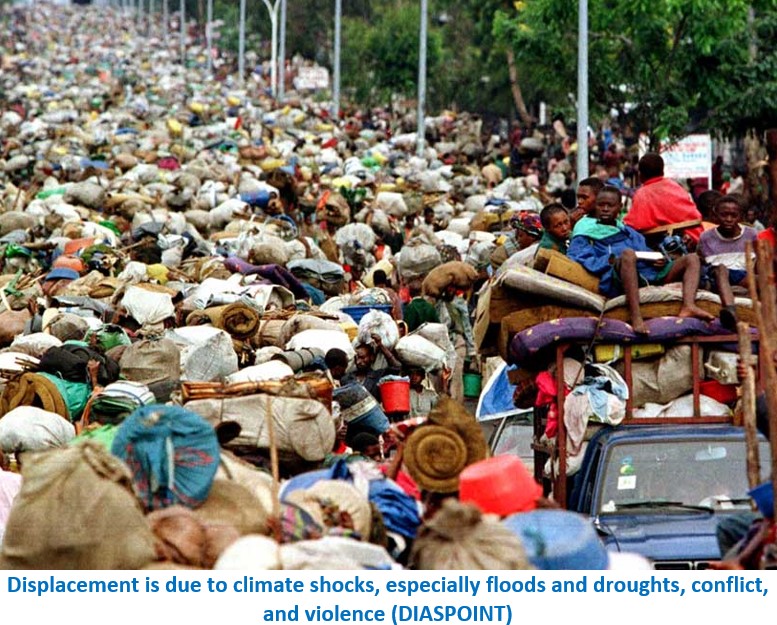UN says, 11.7 million persons displaced in East Africa and Great Lakes region in 2023
Post By Diaspoint | July 1, 2023

There were approximately 11.71 million Internally Displaced Persons (IDPs) in East and Horn of Africa and the Great Lakes (EHAGL) region as of March 31, 2023, according to a situation report by the United Nations High Commissioner for Refugees (UNHCR) at the UN Refugee Agency.
The IDP population mainly in Burundi, Ethiopia, Somalia, South Sudan and Sudan was estimated at 75,300, 2.73 million, 3 million, over 2.23 million and over 3.7 million people respectively.
The drivers of displacement are complex and varied. Some are conflict, climatic and natural disasters.
In East Africa’s Burundi, the majority of the displacements were due to climate-related incidents like violent winds, torrential rains and flooding. In recent years, the large and rapid rise of Lake Tanganyika caused over 84 per cent of the country’s internal migration. Burundi is globally one of the 20 most climate-vulnerable countries.
Most of the internal displacement in Ethiopia is due to localised conflicts and inter-communal violence. Several regions in Ethiopia have also seen climate shocks and displacements due to natural disasters such as drought and flooding.
The internal displacement in Somalia was associated with conflict/insecurity (52 per cent), drought (31 per cent) and flooding (16 per cent).
An estimated 190,000 persons have been internally displaced from Somalia’s Sool region following armed conflict centred in Laas Caanood district.
Drought affects the entire country, with the Bay region receiving the most number of persons displaced by drought. The Gedo region has experienced the most flood-displaced persons.
Between January and March 2023, around 150,000 individuals in South Sudan were forcibly displaced by conflict and inter-communal violence.
The arrival of the dry season in South Sudan (December-May) has escalated forced displacement in the country owing to an increase in the mobility of actors engaged in various conflicts around the country as well as cattle grazing and raiding. This is distinct from displacement during the wet season, which predominantly relates to flooding.
UNHCR response
Read More from original source
